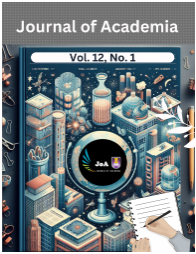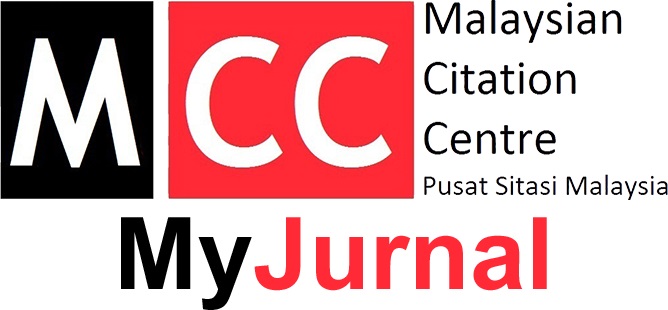AN EXPLORATORY FACTOR ANALYSIS OF FACTORS AFFECTING SAFETY PERFORMANCE IN MALAYSIAN PARAMEDIC TRAINING INSTITUTES
Keywords:
Safety performance, Safety climate, Safety culture, Malaysian paramedic training institute, Exploratory factor analysisAbstract
Safety performance at the government paramedic training institution includes determining what elements might impact the improvement of safety performance and contribute to a preventive safety culture inside the institute. This research intends to investigate and identify the elements that impact safety performance at the Malaysian paramedic training institution. By examining the literature, many elements that affect safety performance have been identified as having a global impact. Using survey questionnaires, exploratory factor analysis (EFA) was used for dimension reduction, and five clustering components of the 48 indicators were identified and discussed. The five factors were management commitment, safety system, risk management, safety competency, and workers’ involvement in safety. It was discovered that these factors substantially affect the safety performance of paramedic training institutions in Malaysia. The findings of this research will aid paramedic training institutes in boosting their safety performance, hence creating a safer work environment for employees with fewer hazards and accidents.
References
Amirah, N. A., Amin, A., Muda, S., Talaat, W. I. W., & Rashid, N. M. N. N. M. (2017). Relationship between behavioral aspects and safety culture in the Peninsular Malaysia manufacturing industry. World Applied Sciences Journal, 35(9), 1880–1884.
Atak, A., & Kingma, S. (2011). Safety culture in an aircraft maintenance organization: A view from the inside. Safety Science, 49(2), 268–278.
DOSH, M. of H. R. (2021a). Laporan Tahunan 2021 JKKP.
DOSH, M. of H. R. (2021b). Pelan Induk KKP 2021-2025. In 2021-2025.
Field, A. (2005). Exploratory factor analysis. in discovering statistics using SPSS. The Alden Press. pp. 619--680
Field, A. (2009). Discovering Statistics Using SPSS. (3rd Ed.). Sage Publications, London.
Fogarty, G. J., & Shaw, A. (2010). Safety climate and the Theory of Planned Behavior: Towards the prediction of unsafe behavior. Accident Analysis and Prevention, 42(5), 1455–1459.
George, D., & Mallery, P. (2016). IBM SPSS statistics 23 step by step: A simple guide and reference. New York. Routledge. 14th Ed.
Hair, J. F., Anderson, R. E., Tatham, R. L., & Black, W. C. (1995). Multivariate data analysis. Englewood Cliffs, New Jersey: Prentice Hall.
Hair Jr., J. F., Anderson, R. E., Babin, B. J., & Black, W. C. (2010). Multivariate data analysis. in Australia: Cengage: Vol. 8 Ed.: pp. 758–779.
Hinton, P., McMurray, I., & Brownlow, C. (2014). SPSS Explained. Routledge.
Ismara, K. I., Husodo, A., Prabandari, Y. S., & Hariyono, W. (2019). Relationship model for occupational safety and health climate to prevent needlestick injuries for nurses. National Public Health Journal, 13(3), 144–149.
Lozano, L. M., García-Cueto, E., & Muñiz, J. (2008). Effect of the number of response categories on the reliability and validity of rating scales. Methodology, 4(2), 73–79.
Mashia, M., Subramaniama, C., & Joharia, J. (2016). The effect of safety training and workers involvement on healthcare workers safety behavior: the moderating role of consideration of future safety consequences. International Journal of Business Management, 1(2), 46-81.
Noor Arzahan, I. S., Ismail, Z., & Yasin, S. M. (2022). Resilient safety culture and safety performance: examining the effect in Malaysian paramedic training institute through Importance-Performance Map Analysis (IPMA). Safety, 8(2). 25.
Nunnally, J. C., & Bernstein, I. H. (1994). Psychometric theory (3rd ed.). New York: McGraw Hill.
Seo, D. C., Torabi, M. R., Blair, E. H., & Ellis, N. T. (2004). A cross-validation of safety climate scale using confirmatory factor analytic approach. Journal of Safety Research, 35(4), 427–445.
Tabachnick, B. G., Fidell, L. S., & Ullman, J. B. (2007). Using multivariate statistics (5th Ed.). US: Pearson.
Downloads
Published
Issue
Section
License
Copyright (c) 2024 Journal of Academia

This work is licensed under a Creative Commons Attribution-NonCommercial-NoDerivatives 4.0 International License.












